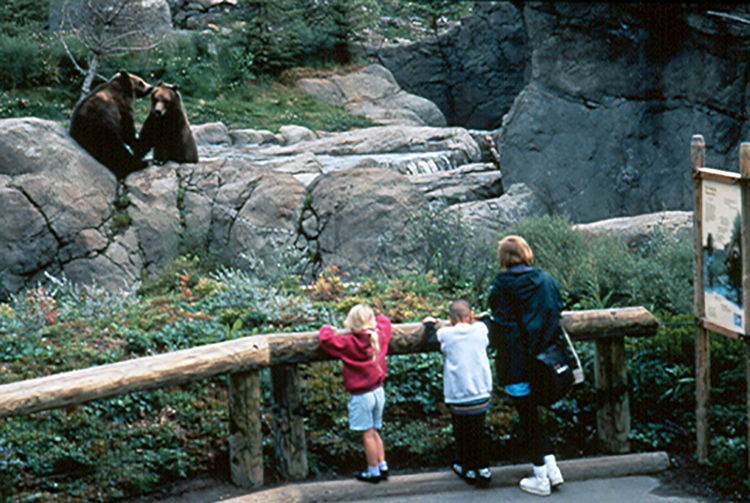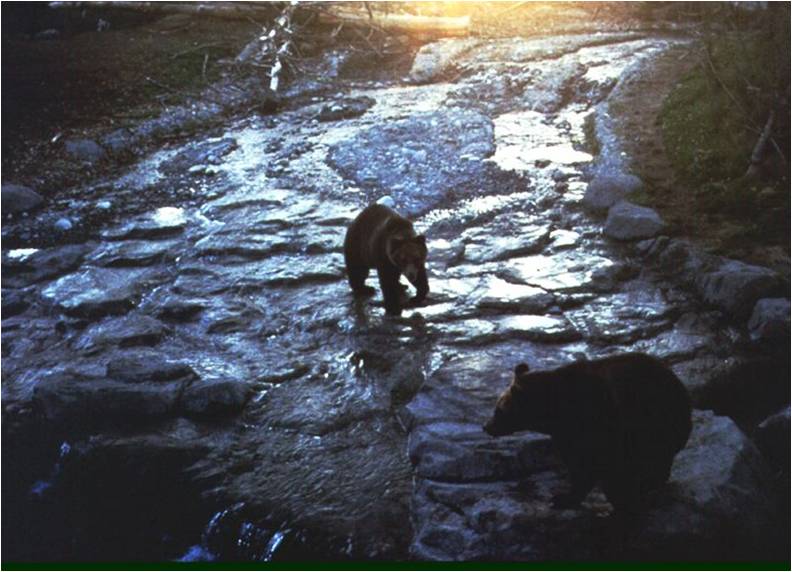Woodland Park Zoo
Long-Range Plan and Exhibits Woodland Park Zoo

Photo: K. Andersen
Encouraged by zoo’s design manager and later Zoo Director David Hancocks, the design team looked beyond what other zoos were doing and instead “…used nature as the model”. The resulting exhibits including gorillas, Asian primates, African savanna and temperate wetlands, and later by the Northern Trail boreal forest exhibit, broke the old mold for zoo design and established the basis for “Landscape Immersion Design”, which has subsequently caught on with zoos around the world.

Jon was a co-author with Grant Jones and Dennis Paulson, of the award winning Long-Range Plan , writing exhibit “scenarios” or “storylines” for over 70 future exhibits for the zoo. Jon was a Senior Associate at Jones & Jones, Architects and Landscape Architects, Seattle, Washington, at that time. Johnpaul Jones and John Swanson (J&J) and David Hancocks made significant contributions to the work.

Not only was the “landscape immersion” vision innovative, but the “landscape analysis” process used “…allowed the site to speak to the designers” as principal author Grant Jones would have said. The existing zoo grounds were carefully analysed to determine which areas were best suited for recreating which themed biome area. Jon even calculated summer and winter shadows from existing trees. Open lawn areas were converted to African Plains and existing groves of trees became Central African and South American Rainforests. Large, valued trees not fitting the refined plans were transplanted at considerable cost to future biome locations where they would contribute to the future exhibit stories. Today, well over forty years later, the now mature landscapes fit the site so well as to seem completely natural and timeless.
Another innovation is the visioning “Exhibit Scenarios”, Jon wrote. These were detailed, even poetic descriptions of proposed animal habitat areas including subheadings such as geology, soils, water, and vegetation written as if one were studying a naturally occurring landscape years in the future. These scenarios covered all proposed future exhibits for all the species and biomes to be presented, from tropical rainforest to desert and boreal forest. Today Jon does not recommend such detail for far future developments, yet Woodland Park Zoo followed these plans carefully for twenty-three years before asking Jon, then with CLRdesign, to write the updated master plan in 1999.
In 1999 while a Principal at CLRdesign, inc., Jon was asked by Woodland Park Zoo to rewrite and update the Long-Range Plan with zoo staff John Bierlein, Jim Maxwell and others. This was completed in 2004. The update reorganized and simplified zoo-wide circulation, located proposed parking structures and suggested infill and management strategies to make the most of the zoo’s outstanding exhibit infrastructure.
ASLA 1977 President’s Award of Excellence